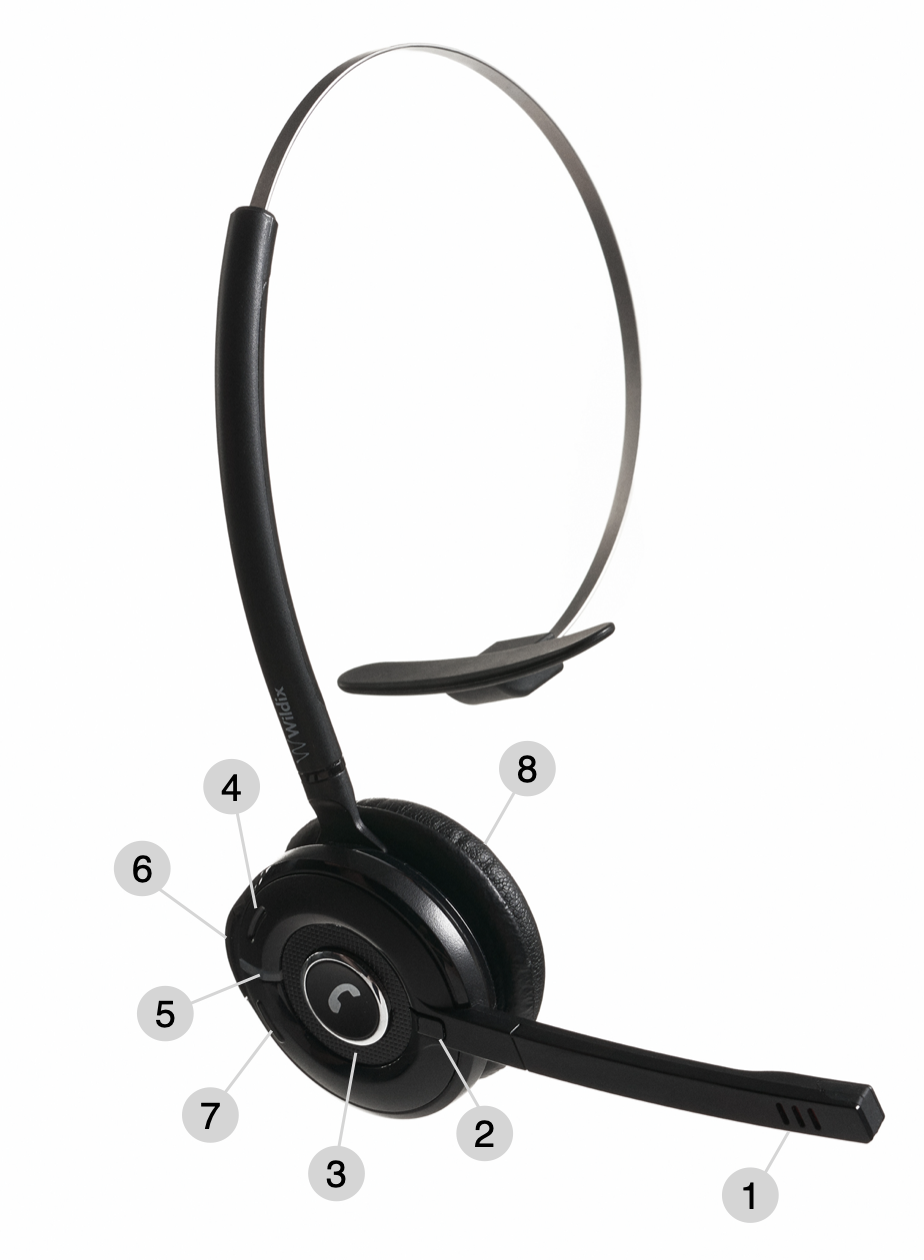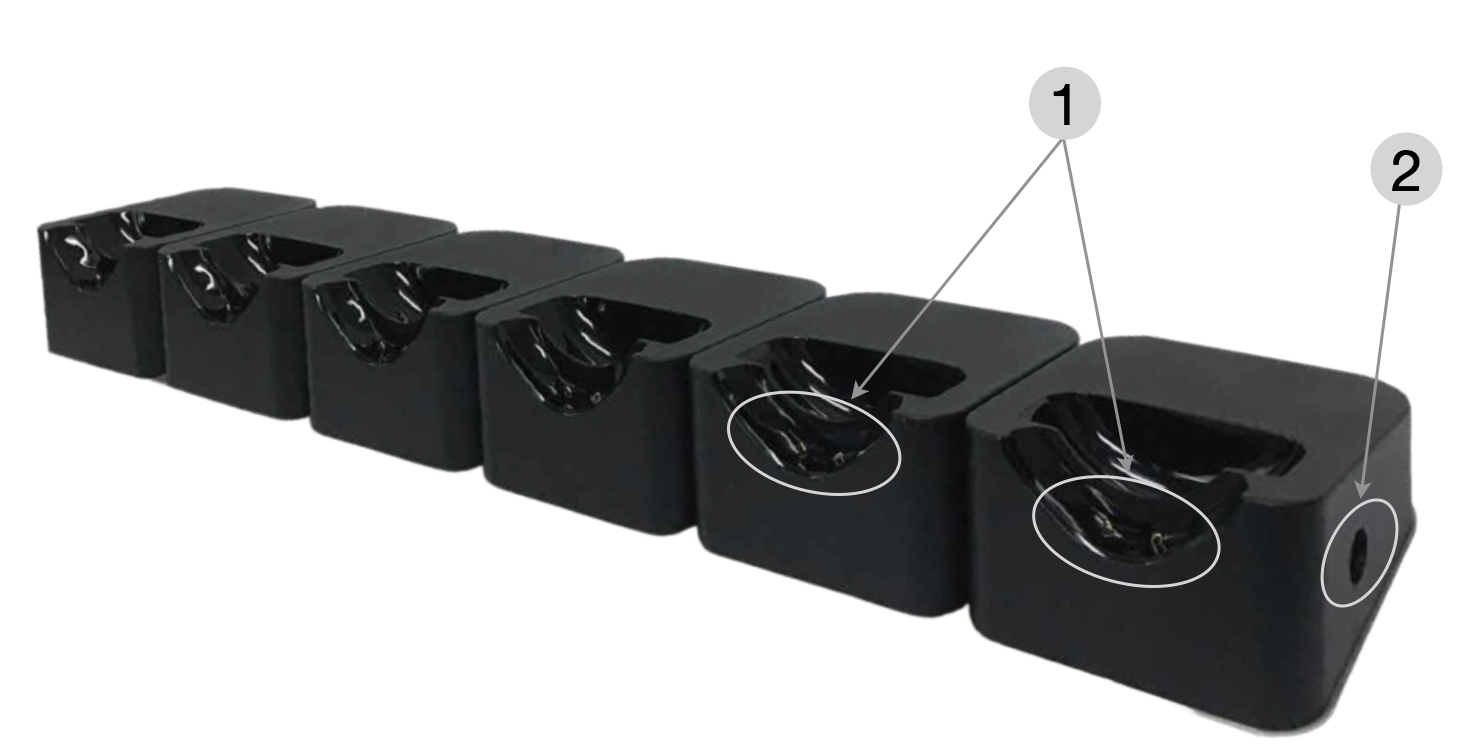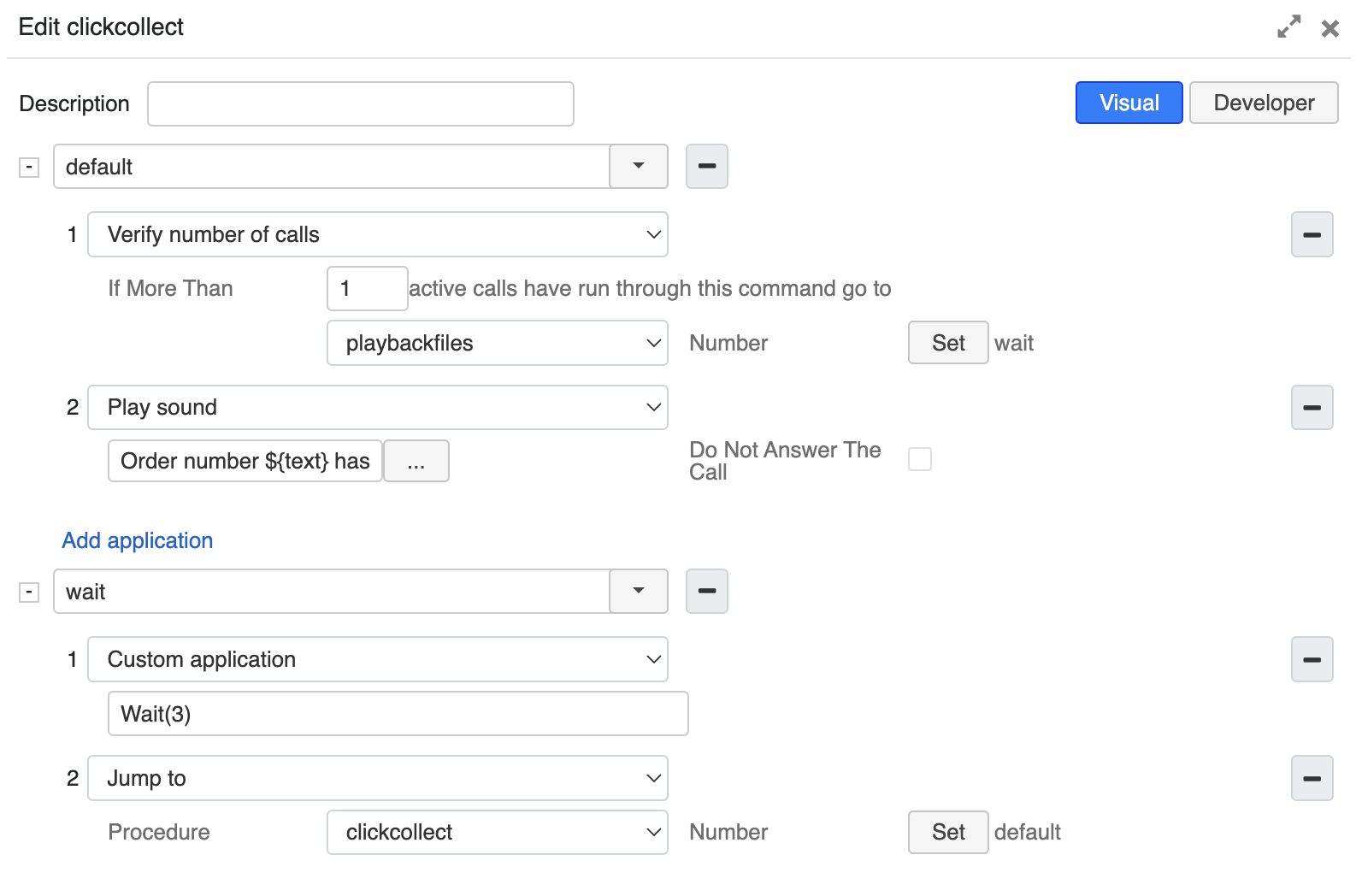This guide explains how to configure Retail mode for x-hoppers – Wildix wireless headset solution that allows fast and easy communication for retail stores.
Created: May 2022
Updated: June 2023
Permalink: https://wildix.atlassian.net/wiki/x/QB-OAQ
Other documentation: x-hoppers User Guide, x-hoppers datasheet
Introduction
x-hoppers is a solution for individual and chain retail stores, that provides an active channel to colleagues and support anywhere in the store, connects clerks and increases in-store conversions. The solution is built on DECT (Digital Enhanced Cordless Telecommunications) technology, linked to a full communications system in the Cloud. Fully wireless x-hoppers headsets let clerks easily communicate with each other as well as receive calls.
x-hoppers users are connected to a broadcast, in Retail mode (muted) by default. If any user wants to talk in the broadcast, they just need to press a button to unmute themselves. Besides, users can accept incoming calls, after which they return to the broadcast.
Also, x-hoppers offers an integrated QR code system, which can provide store clerks with instant buyer alerts and lets you gather analytics on customer engagement. The system logs each occasion of scanning a QR code by customer. To set up the QR code system, you need to create dedicated pages on your web server, each page devoted either to a category of products or a separate product. Then, generate QR code for each of these pages, print and attach them wherever required in the store, letting customers request for assistance right on the spot. See more in the QR code system section of this guide.
Requirements
- WMS 6
- License requirements:
- x-bees-Standard for clerks
- x-bees-SuperBee for managers
- W-AIR Network components: W-AIR Base stations and repeaters. Amount depends on the store area and the number of users
x-hoppers Headset Overview
1 - Microphone
2 - Mute button
3 - Call button
4 - Volume- button
5 - LED Indicator
6 - AUX Function button (Power On)
7 - Volume+ button
8 - Speaker
Note: There are 2 button combinations that have to be pressed at the same time:
Register - Call, Volume+ and Volume-
Power off - AUX function, Volume+ and Volume-
LED indicators overview
Color | LED indication | Status |
Green | Short blink followed by long blink | Power Up |
Fast short blink, repeated | Incoming call | |
Single short blink. Notification of call only via audio in HS | 2nd incoming call, call active | |
Single short blink | In call | |
Long blink | Battery charging | |
Steady on | Battery charging, full | |
Red | Long blink followed by short blink | Power Down |
Fast, short blink | Low battery | |
Steady on | Battery charging, low battery | |
Long blink | Registration failed | |
Single short blink repeated slow | Idle, out of range | |
Blue | Short blink repeated fast | Registration, ongoing |
Long blink | Registration completed | |
Single short blink repeated slow | Idle, connected | |
Purple | Steady on | Menu |
None | Deregistered |
Multi-Сharger overview
Multi-Сharger consists of 6 chargers connected in parallel with a 5V/ 4A power supply and can simultaneously charge up to 6 headsets.
1 - Charging pins
2 - Charger connection
Using the charger
When charging a Headset for the first time, it is necessary to leave it in the Multi-Charger for at least 10 hours before the battery is fully charged, and the Headset is ready for use.
For correct charging, ensure that the room temperature is between 5°C and 45°C / 41°F and 113°F. Do not place the Headset in direct sunlight when charging.
The Headset is automatically deactivated and can’t receive calls while charging.
Activation
1. Configure Retail mode on the PBX
To configure Retail mode on your PBX, open a ticket with our Technical Support team and our x-hoppers architects will help you with the setup.
Note: To see if Retail mode is activated, you can check the following parameters in the [wildixair] section of the /rw2/etc/provision.conf file:
- WairRetailmode=on
- WairAudiofeedback=voice
- WairSilentcharging=on
- WairSilentmode=off
2. Set up multicell DECT Network
You need to install and provision W-AIR Base stations and set up a multicell W-AIR DECT network. For detailed information and instructions on how to plan and configure multicell network, check this guide: W-AIR Network Admin Guide - Sync over LAN.
3. Register headsets
Before headsets can be assigned to specific users, they need to be registered to W-AIR Base Station.
Limitation: It is impossible to register a headset if the code of DECT network set up in WMS → Devices → W-AIR Networks is different from "0000" (default code).
Workaround: you can temporarily change the code to default one ("0000") on the W-AIR Networks page in WMS, register and assign the Headset(s), and then change it back to the custom one.
Note: in case you have several W-AIR networks (for example, in a test environment), the Headset might register to a Base station belonging to another network. In such a situation it’s recommended to hold the Headset closer to the Base station you would like to register it to.
- Put the Headset in the registration mode by pressing Call, Volume+ and Volume- buttons at the same time for more than 5 seconds. When the Headset is in registration mode, the LED indicator blinks with short blue flashes and a voice prompt announces “Registering”.
The Headset connects to the Base Station. When the Headset is subscribed, the voice prompt announces “Headset subscribed”.
Note: If the registration fails, the voice prompt announces “Headset not subscribed”. Before trying to register the Headset again, please check if it is within range of W-AIR Base station and the voice prompt announces “Registering”.
- To check if the Headset is registered to the Base station, go to W-AIR Base Station web interface -> Extensions. If the registration is successful, the device appears in the list of available extensions with the state SIP Registered@RPN00
4. Assign headsets to PBX users
Headsets can be assigned to users via the W-AIR devices tab in WMS, where you can find the list of all x-hoppers headsets:
- Go to WMS -> Devices -> W-AIR devices
- Choose the headset and click Assign to user
- Enter user extension and click Save.
Note: After assigning headsets to users, to figure out which headset belongs to whom, you can dial users’ extensions and see which headsets respond.
Assigning headset to a different user
- Choose the headset on the W-AIR devices tab -> click Assign to user
- Enter a different extension and click Save.
Starting from W-AIR firmware v 650b2, headsets get the following pre-configured settings:
- Retail Mode: On
- Audio feedback: Voice
- Silent charging: On
- Silent mode: Off
Notes:
- W-AIR base station needs to be configured/ synced in order to push all necessary settings to the headsets.
- Starting from WMS 6.01.20221122.1, it is possible to control silent charging setting (with default "on" setting, there is only LED indication while charging; you can set headsets to have both LED indication and audio while charging, or configure the headset to be disconnected without possibility to receive calls while charging). See the document Provisioning Custom Settings for more instructions.
Deassigning a headset
- Choose the headset on the W-AIR devices tab -> click Assign to user
- Select “unknown” in the Extension field and click Save.
Documentation: WMS Start Guide: Devices management.
5. Configure Dialplan
Modify the users dialplan as follows:
- Click Add number
Enter *wair*
Note: It is the value which is dialled by the headset in the Retail mode. This value is default and should not be changed.
- Add the below dialplan applications:
- Set -> Language -> choose language
- Play sound -> click Browse (three dots) and choose the sound to be played on joining the broadcast
- Conference -> enter the conference room ID number. This can be any number, e.g. 1, 2, 3, etc.
Documentation: Dialplan Applications - Admin Guide.
Joining the Broadcast from Other Devices
Wildix desk phones can also join the broadcast, as long as they are connected to the same PBX. There are two options:
- A user should dial the feature code for Conference access (98 by default) + the conference room number. Example: 981 for conference room number 1.
- Alternatively, a Dialplan can be configured so that when users dial a certain number, e.g. 333, the call is automatically put into the broadcast.
Documentation: Dialplan Applications - Admin Guide.
QR code system
Use cases
- QR code for each product
Have a separate web page for each of the products and want customers to get to that exact page when scanning the QR code? Then, this option is just for you. Attach QR code next to each product, which customers can scan and get to the page with the product description.
- QR code for a category of products
If you have a huge store, rather than attaching QR code to every single product, you can opt for using one QR code for a category of products. In this case, you can place the code in each row in your store, to be easily found by customers.
In either of the above scenarios, once QR code is scanned, clerks are instantly notified which exact product or product category a customer is interested in and can provide any necessary assistance and guidance. Moreover, you can collect statistics (e.g. via Google Analytics) on which product QRs were scanned and how many times, which allows you to analyze customer engagement and make weighted decisions.
Additionally, on the product web page you can place a Kite button, letting customers contact clerks or back office via chat, audio or video call.
Kite documentation: Wildix WebRTC Kite - Admin Guide - English.
How to set up
Generate a call
We provide SDK (REST APIs), which can be used to set up call generation when someone scans the code. So for this part, you need a web developer, who would configure the relevant POST and CURL requests for each QR code.
Documentation: Developer Documentation.
Note: To protect the system from spam, you may set up CAPTCHA on your website before the call is initiated.
Configure Dialplan
On the Dialplan side, you need to configure the call to be sent to the broadcast with clerks. The call should be accompanied with notification via our Text-to-speech feature, to inform clerks which page was scanned/ where in the store assistance is required. QR codes require separate Dialplan entries.
Documentation: Dialplan applications - Admin Guide.
Click and collect setup
Click and collect functionality speeds up and simplifies the process of processing the orders made online. When customers with online orders come to the store, they just need to enter their order ID number on a dedicated tablet. The staff is immediately notified in the conference that the relevant order number is there to collect.
To configure click and collect functionality:
- Create a Dialplan rule e.g. clickcollect
- Add number default:
- Add Verify number of calls application, enter 1 for the max number of active calls and select the relevant procedure
- Add application Play sound and enter the text that should be pronounced in the conference, e.g. Order number ${text} has arrived to collect the order
- Add number wait with the following applications:
- Custom application with parameter Wait(3)
- Jump to application with the procedure clickcollect
Example of CURL request:
curl -u admin:admin_password -X POST 'https://xhoppersdemo.wildixin.com/api/v1/Originate' --data-urlencode "channel=Local/conf*1@pbxservices" --data-urlencode "context=clickcollect" --data-urlencode "priority=1" --data-urlencode "exten=s" --data-urlencode "variable=text=124" --data-urlencode "callerid=1"
Transcribe in-store conversations to x-bees
Starting from WMS Beta 6.03.20230606.1, it is possible to transcribe the content of x-hoppers conference to x-bees conversation, with messages in the conversation displayed on behalf of the user who is speaking.
To configure the feature:
Create x-bees conversation with users that are in the x-hoppers conference
Copy x-bees conversation ID (available in the URL of the conversation)
Add following data to the /rw2/etc/pbx/x-hoppers.json file:
"audio_conf_id": "ID of the x-hoppers conference",
"xbees_channel_id": “ID of the x-bees conversation”
When the feature is enabled, whatever is told in the conference is automatically transcribed and displayed in x-bees conversation, so managers could monitor what was discussed in the conference.
Note: If user talks for more than 60 seconds without a pause, the message is not transcribed.
Record in-store conversations
Starting from WMS Beta 6.03.20230424.1, it is possible to record in-store conversations and listen them via CDR-View. The recording starts when user unmutes himself in the conference and begins talking.
To enable the functionality:
Add the following key to the /etc/systemd/system/pbx-data-engine.service.d/override.conf file: --conf-recording
# vi /etc/systemd/system/pbx-data-engine.service.d/override.conf [Service] ExecStart= ExecStart=/usr/sbin/pbx_data_engine.py --conf_recording
Reload systemd and restart the service to apply the changes:
# systemctl daemon-reload # systemctl restart pbx-data-engine
Once enabled, the recording of in-store conversations get displayed in the CDR-View.
Current limitations:
- Recording is not automatically stopped if user forgets to mute the headset.
- For a new user who joins the conference, recording is automatically started even if the user is muted, and the recording file of about 3 seconds is saved on the PBX.
How to increase volume for noisy environments
Note: The support starts from WMS Beta 6.03.20230601.1.
In case of noisy environment, you can increase x-hoppers volume. To do this, add the following parameters to the section [default_bridge] of the file /etc/callweaver/confbridge.conf:
default_listening_volume=6
Where 6 is the preferred volume. The maximum value is 10. The default value for both parameters is 0.




